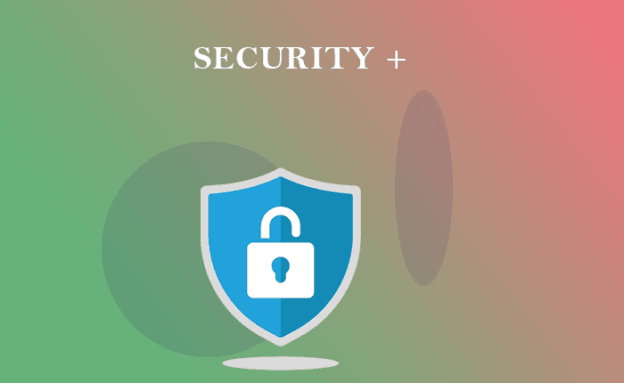CompTIA Security+ Training Course
Categories: All Courses, Cybersecurity Certifications

About Course
The CompTIA Security+ training course equips individuals with essential cybersecurity skills. Covering topics like network security, threats, cryptography, access control, and risk management, it prepares participants for the CompTIA Security+ certification exam. Interactive lectures, hands-on labs, practice exams, and study materials provide a comprehensive understanding of cybersecurity concepts. Participants learn to identify and mitigate security risks, secure networks, implement access controls, and respond to security incidents. This course is ideal for aspiring cybersecurity professionals, IT personnel, and those seeking to validate their security knowledge. Successful completion certifies expertise in fundamental security principles, enhancing career prospects in the cybersecurity domain.
What Will You Learn?
- 1. Cybersecurity Foundation
- 2. Career Advancement
- 3. Industry-Recognized
- 4. Security Expertise
- 5. Job Opportunities
- 6. Validation of Skills
- 7. Cybersecurity Community
Course Content
Module 1
-
1.01 Course Introduction
04:42 -
Quiz Module -1
-
Section 1: Short Answer Questions
-
Section 2: Scenario-Based Questions
-
Section 3: Research and Analysis
Module 2
-
2.01 Compare and Contrast Information Security Roles
06:31 -
2.02 Compare and Contrast Security Control and Framework Types
08:13 -
2.03 Type of Threat Actors and Attack vectors
06:34 -
2.04 Threat Intelligent Sources
05:43 -
2.05 Assess Organizational Security with Network Reconnaissance Tools
05:18 -
2.06 Security Concerns with General Vulnerability Types
06:28 -
2.07 Vulnerability Scanning Techniques
05:35 -
2.08 Penetration Testing Concepts
10:36 -
2.09 Classify Contrast Social Engineering Techniques
06:41 -
2.10 Indicators of Malware-Based Attacks
06:27 -
Quiz Module -02
-
Section 1: Short Answer Questions
-
Section 2: Scenario-Based Questions
-
Section 3: Research and Analysis
Module 3
-
3.01 Compare and Contrast Cryptographic Ciphers
06:43 -
3.02 Cryptographic Modes of Operation
05:30 -
3.03 Cryptographic Use Cases and Weaknesses
05:14 -
3.04 Manage Certificates and Certificate Authorities
06:17 -
3.05 Implement PKI Management
04:54 -
3.06 Summarize Authentication Design Concepts
06:40 -
3.07 Implement Knowledge-Based Authentication
05:54 -
3.08 Implement Authentication Technologies
06:54 -
3.09 Summarize Biometrics Authentication Concepts
07:08 -
3.10 Identity Management Controls
05:11 -
3.11 Implement Account Policies
04:35 -
3.12 Implement Authorization Solutions
05:54 -
3.13 Importance of Personnel Policies
04:39 -
Quiz Module -03
-
Section 1: Short Answer Questions
-
Section 2: Scenario-Based Questions
-
Section 3: Research and Analysis
Module 4
-
4.01 Implement Secure Network Designs
06:08 -
4.02 Implement Secure Switching and Routing
07:23 -
4.03 Implement Secure Wireless Infrastructure
04:07 -
4.04 Implement Load Balancers
05:18 -
4.05 Implement Firewalls and Proxy Servers
05:41 -
4.06 Implement Network Security Monitoring
05:38 -
4.07 Summarize the Use of SIEM
04:38 -
4.08 Implement Secure Network Operations Protocols
07:36 -
4.09 Implement Secure Application Protocols
05:26 -
4.10 Implement Secure Remote Access Protocols
06:38 -
4.11 Implement Secure Firmware
05:38 -
4.12 Implement Endpoint Security
-
4.13 Embedded System Security Implications
04:55 -
4.14 Implement Mobile Device Management
05:54 -
4.15 Implement Secure Mobile Device Connections
05:39 -
Quiz Module -04
-
Section 1: Short Answer Questions
-
Section 2: Scenario-Based Questions
-
Section 3: Research and Analysis
-
Section 4: Practical Application
Module 5
-
5.01 Analyze Indicators of Application Attacks
04:45 -
5.02 Outline Indicators of Web Application Attacks
05:16 -
5.03 Illustrate Secure Coding Practices
07:32 -
5.04 Types of Vulnerability Assessment
04:16 -
5.05 Analyze Deployment and Automation Concepts
05:58 -
5.06 Comparing Approaches to Vulnerability Assessment
04:58 -
5.07 Working of Vulnerability Scanning Solutions
05:43 -
5.08 Types of Vulnerability Assessment Tools
07:14 -
5.09 Characteristics of a Good Vulnerability Assessment Solution
07:34 -
5.10 Choosing a Vulnerability Assessment Tool
06:27 -
5.11 Common Vulnerability Scoring System (CVSS)
07:37 -
5.12 Common Vulnerabilities and Exposures (CVE)
06:01 -
5.13 National Vulnerability Database (NVD)
06:28 -
5.14 Resources for Vulnerability Research
06:56 -
5.15 Vulnerability Assessment Tools
06:14 -
Quiz Module -05
-
Section 1: Short Answer Question
-
Section 2: Scenario-Based Questions
-
Section 3: Research and Analysis
-
Section 4: Practical Application
Module 6
-
6.01 Risk Management Processes and Concepts
05:28 -
6.02 Business Impact Analysis Concepts
05:03 -
6.03 Redundancy Strategies
07:26 -
6.04 Backup Strategies
05:37 -
6.05 Cybersecurity Resiliency Strategies
06:20 -
6.06 Importance of Physical Site Security Controls
09:37 -
6.07 Importance of Physical Host Security Controls
09:14 -
Quiz Module -06
-
Section 1: Short Answer Questions
-
Section 2: Scenario-Based Questions
-
Section 3: Research and Analysis
-
Section 4: Practical Application
